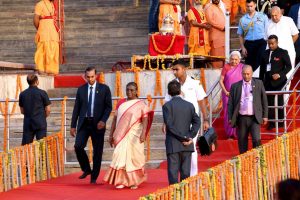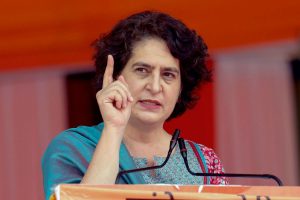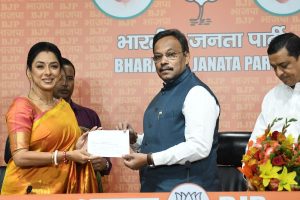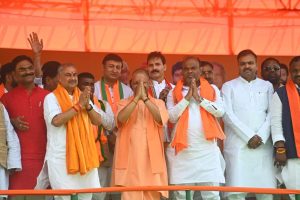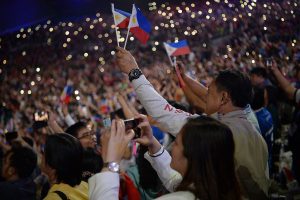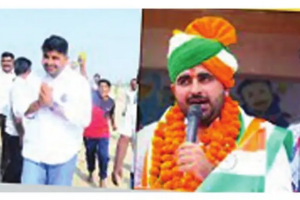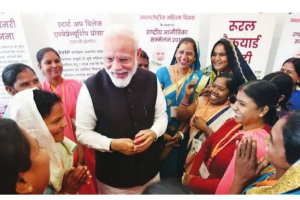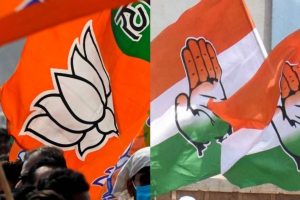However, there are several challenges. First, rural areas that account for nearly three-quarters of India’s population can be directly targeted 24×7. Information, disinformation and misinformation overflow would certainly occur amongst subscribers. Second, targeting comes at a premium. Simple bulk messaging will no longer do. Crisp professionally produced audio-video clips would have to be devised in formats that would support 700 million feature phones and 166 million smart phones that is a pricey proposition.
Yet the fact of audio-video and mobile FM transmission that are the rage of vast sections of an unemployed work force cannot be understated. Third, political advertisements in soap slots do not come cheap either, the closer it gets to election dates. Therefore, clips would have to be produced that would be effective and deliverable in say a 7-10 second slot, unlike the rank crudity and lack of brevity that is their hallmark today.
Fourth, Internet speeds being erratic, more effort, and perhaps money, would have to be devoted to compression technologies that can seamlessly move across India.
Fifth, with unemployment running high in the age group of 15-34 years, a group that has had the benefit of education, who are addicted to audio-video on their mobile devices, false promises of jobs in a distant future are no good.
This young generation that Indian politician’s delight in labeling the country’s ‘demographic dividend’ is a deadly cocktail of economic deprivation, dependency and frustration. Many of them who are able to distill the truth between fake and real news and the achievements and failures of politicians, in audio-video clips from vernacular media channels, will be the most difficult target group for any political party. Yet they cannot be ignored since they constitute over 40 per cent of the national electorate.
Sixth, with rapidly increasing access to news and views, beamed onto their palms or from vernacular TV channels, voters beyond the age 44 with greater political maturity than their younger groups are turning potent opinion-makers at the village level, away from the political sarpanches and patwaris.
Seventh, women voters too have moved up the education ladder and a large number in rural areas not only have Internet access but also vernacular TV access are another, perhaps far more discerning, voting group. They face the worst of the economic crisis and thus their voice is increasingly showing up in elections.
For them, media communication strategies would have to be devised, again none of it being cheap. Yet, like the overlapping group of youngsters, they constitute almost 50 per cent of India’s national electorate and cannot be ignored.
Eighth, mobile-Internet connectivity coupled with vernacular media channels make a heady brew and often complement one another, even as they contradict. It is such congruence and divergence of opinions, false promises, performance, corruption and criminal acts of politicians that will be beamed across India on a 24×7 basis.
Live Internet telecast of news, legislative debates, panel debates, notably in the vernacular would favour regional parties the most, although the converse is equally true. Internet and vernacular channel political campaigning do not cost a bomb although developing content does. Equally, promises made during campaigns will be increasingly held to account owing to ready-at-hand access to information, often beamed live.
Ninth, governments will be hard pressed to deliver content that is truthful and verifiable while election manifestos could serve as the benchmark for performance or rejection. Governments’ performance will be watched and judged more closely than ever before.
Already election results point to a fast developing political consciousness not based upon rabble-rousing and brazen bribery. For political parties, other than those in power, the Internet-mobile-vernacular TV provides a Heaven-sent opportunity to showcase their abilities and intents. All would, however, do well to remember that an opportunity missed now could remain a lifelong regret.
Finally, over a billion Internet-enabled handhelds may translate into an arbitrary 60 per cent of the total votes (after discounting more than a single handset/head and those below voting age). Assuming a conservative average of 10 lakh votes per Lok Sabha constituency, owners of mobile and Internet connections would hold the fate of each Lok Sabha seat on their fingertips.
In such a scenario, every percentage of users shifting their political loyalties has the potential of switching about 6 lakh votes from one candidate to another that could cause a catastrophic loss for any party. Voter preferences remain a secret till results are out since many do not attend political rallies (unless incentivized in cash or kind), and rather frame their voting decisions at home. It is also for this reason that election surveys and polls are becoming unreliable with each passing day.
The Information Age is fast exploding. The country’s next general election will be fought from the confines of voters’ homes rather than from the public rallying fields. Advances in communications will prompt people to make informed choices of the candidates they elect and hold them accountable to hitherto unprecedented measure. Already Internet-based campaigning is claiming political casualties over a large number of elections in the last 3-4 years.
That the Internet-mobile-TV combine is a double-edged sword is also quite apparent from recent election reversals of the parties in power. If India’s ‘demographic dividend’ is indeed worthy of harvest, it is voters in the age-group of 18-54 years led by equally young, professionally accomplished, honest and energetic leaders who can deliver growth and prosperity.
In this 18-54 generation also lies India’s deliverance from suffering and decline, not in the politics of jaded and discredited politicians who indulge in the most venal and guttering invectives, bribery and violence for their personal gain. Telecom is the greatest leveler of fortune, the greatest virtue of India’s fledgling democracy.
(Concluded)
The writer is a senior public policy analyst and commentator


